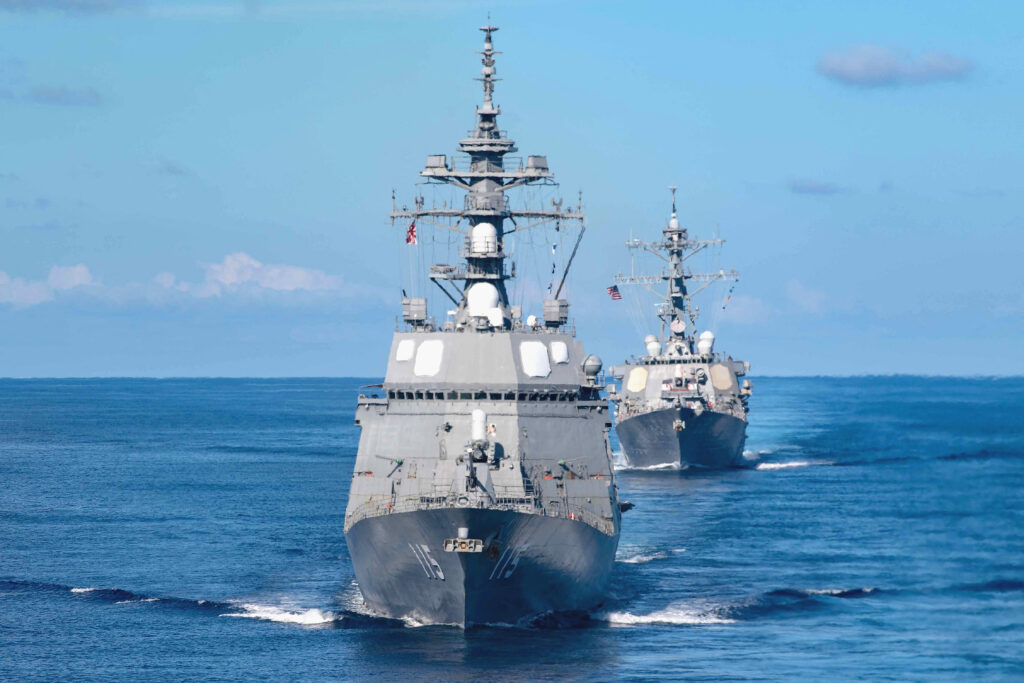The rise of minilateral initiatives in the Indo-Pacific has attracted worldwide attention as it appears to be a response to the region’s changing balance of power. Yet such groupings can come with their own challenges, particularly when they bring together countries with distinct or only partially converging strategic outlooks.
This is especially the case with the Quadrilateral Security Dialogue, or the Quad, which brings together Japan, Australia, India and the United States. Unlike the US–Japan–Australia Trilateral Strategy Dialogue (TSD), which is likely to strengthen the US strategic position and the alliance system by connecting allies with each other, the Quad represents a looser consortium of ‘like-minded’ states.
The 2004 Indian Ocean tsunami disaster created initial contact in the maritime sphere between the would-be Quad powers. In 2007, then Japanese Prime Minister Shinzo Abe proposed the Quad, but meetings were later suspended due to a lack of momentum. But as each country began to perceive China’s increasing assertiveness in the maritime domain, their strategic outlooks began to crystalise around the Indo-Pacific geostrategic framework.
In the wake of China’s challenge, Abe proposed the ‘Free and Open Indo-Pacific’ (FOIP) concept in 2016 and revived the Quad with US support in 2017. The Quad has acquired an increasingly high profile since its re-establishment and become freighted with expectations that it will serve to balance a rising China.
While its members do share liberal values, the Quad has no explicitly articulated goal. Despite its growing political weight in the region, the Quad’s role in the US-led regional architecture remains circumscribed. The type of security the Quad can provide, how it will shape strategic competition and its impact on the regional order remain unclear.
Other than their consensus that China’s rise presents challenges to the regional rules-based order, the four members have struggled to develop a concrete agenda. The United States and its core allies — Japan and Australia — have sought to balance and deter China. By contrast, India’s position has been ambiguous.
New Delhi has been reluctant to discuss security issues in the group, fearing that by engaging on security matters the Quad might turn into an anti-China coalition. With its traditional commitment to non-alignment, India has been uncomfortable with risking entrapment in any Sino–US strategic rivalry, even though it has a border dispute with China and has felt threatened by China’s expanding influence in the Indian Ocean.
India’s reluctance to commit on security initiatives has diluted the Quad’s strategic dimension. This was apparent in the Quad’s first joint statement in 2022, which merely touched on security issues, but emphasised its willingness to contribute to public goods by dealing with climate change, cyber security, infrastructure development and COVID-19. It would appear that the Quad has fallen short of playing a role in checking China.
But there are indications that the Quad is seeking to address China’s challenge in the maritime domain more directly. It has provided a platform for its members to conduct joint naval exercises to promote security cooperation. The Quad has also welcomed the Indo-Pacific Partnership for Maritime Domain Awareness (IPMDA) initiative. Though IPMDA ostensibly focuses on non-traditional security issues, it creates a new capacity to monitor Chinese military and intelligence-gathering activities.
The Quad members also began to shift their language at the 2023 summit meeting in Hiroshima — particularly on maritime issues. They clearly stated their opposition to attempts to change the status quo ‘by force or coercion’ in the maritime domain. The four members again emphasised the importance of adherence to international law, such as the UN Convention on the Law of the Sea, in the interest of peace and stability of the region.
The evidence on whether India has shifted its stance and begun to align itself with the United States in the Indo-Pacific is inconclusive. While the United States may hope that the Quad will continue to evolve to acquire deterrent ‘teeth’, the war in Ukraine has highlighted the persistence of India’s diverging strategic outlook. New Delhi has preferred to retain its close ties with Russia and a neutral position regarding the war. But there has still been a clear convergence on maritime security.
These developments speak to the Quad’s contradictory nature. Having a non-ally, India, in such a minilateral grouping strengthens the Quad’s legitimacy and its value to FOIP and international law. By promoting security networking, the Quad radiates the impression of inclusiveness in the US and allied efforts to uphold the regional order.
But given India’s reluctance to engage on security matters, it is much harder to reach a consensus on any prospective inter-military cooperation. While Washington and its core allies seek to operationalise the Quad as a tool of strategic competition, they must inevitably accommodate a more hesitant New Delhi.
For the time being, the Quad’s contradictory nature limits the value of the Quad in helping to reinforce the US-led security architecture in the Indo-Pacific. The United States, Japan and Australia will likely fall back on other minilateral forums such as the TSD and AUKUS to build up deterrence. Yet these contradictions point not towards stasis, but towards the Quad adopting an ever more significant maritime role in the Indo-Pacific.
Kyoko Hatakeyama is Professor of International Relations at the Graduate School of International Studies and Regional Development, University of Niigata Prefecture.
Thomas Wilkins is Associate Professor at the University of Sydney, Senior Fellow at the Australian Policy Institute (ASPI) and non-resident Senior Fellow at the Pacific Forum and the Japan Institute for International Affairs (JIIA).
Miwa Hirono is Professor and Associate Dean at the College of Global Liberal Arts, Ritsumeikan University.
H.D.P. Envall is Fellow and Senior Lecturer at the Department of International Relations at the Coral Bell School of Asia Pacific Affairs, The Australian National University, and Adjunct Research Fellow at La Trobe University.
This article was written with the generous support of the Australia-Japan Foundation.

